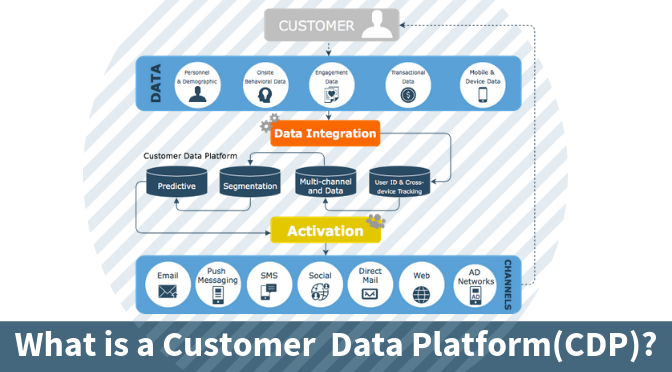[cs_content][cs_element_section _id="1" ][cs_element_row _id="2" ][cs_element_column _id="3" ][cs_element_text _id="4" ][cs_element_headline _id="5" ][cs_element_text _id="6" ][cs_text]
- “Packaged software”: A CDP is a prebuilt system that is configured to meet the needs of each client. While CDPs do require some technical assistance to set up and operate, they are meant to be owned by marketing, not IT.
- “A persistent, unified customer database”: A CDP connects to your first-party data sources, like your website/apps, email marketing system, CRM system, and more to create a persistent, unified customer database. All of your anonymous and known users will be assigned a unique identifier, and as you collect more data, that identifier will be added to each user’s profile.
- “Accessible to other systems”: A CDP connects to your other systems including ad networks, analytics tools, tag management systems (TMS), content management system (CMS), customer relationship management (CRM), marketing automation, and so on, to activate your first-party data. Many CDPs have native integrations built with popular tools so that connecting the CDP only takes a few minutes with a few clicks of a button.



